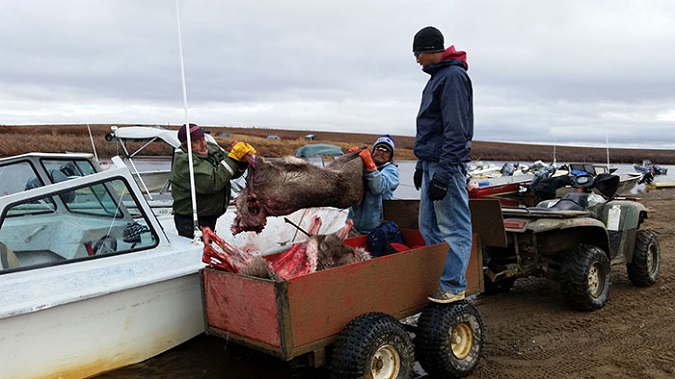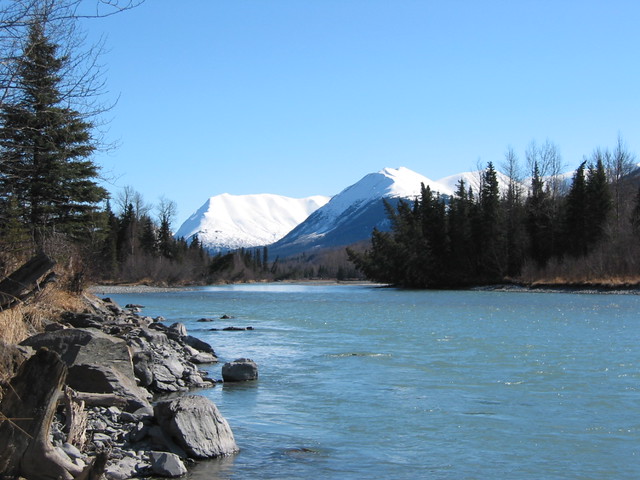
From caribou and permafrost to massive refuges accessed only by float planes, most folks recognize that Alaska is different. So different, in fact, that an entire federal initiative, the Federal Subsistence Management Program, operates only in the Alaska Region.
For rural Alaskans, subsistence fishing and hunting provide a large share of their food – annually they harvest about 18,000 tons of wild foods, including salmon and moose. An economic benefit to be sure, but the harvest of wild foods also connects them to the land and a way of life that has been passed down for thousands of years.
“Like many in the Arctic, my family relies on the land for food,” Keemuel Kenrud, an Arctic Youth Ambassador, writes in a blog.
The Federal Subsistence Management Program and the Office of Subsistence Management (OSM), which supports the program, aim to ensure that wild resources on federal lands remain available to people like Kenrud.
 The Alaska National Interest Lands Conservation Act re-designated Kenai National Moose Range as Kenai National Wildlife Refuge. Photo by USFWS
The Alaska National Interest Lands Conservation Act re-designated Kenai National Moose Range as Kenai National Wildlife Refuge. Photo by USFWS
Some may be familiar with the Alaska National Interest Lands Conservation Act (ANILCA), the 1980 law that established or added to Alaska’s 16 refuges. A lesser-known function of the law was to prioritize subsistence uses by rural Alaskans on federal public lands and water over other consumptive uses. Since 1990, when the federal government assumed management of subsistence on federal public lands from the state of Alaska, OSM has administered this subsistence priority.
Dual management of fish and wildlife harvest is another way Alaska is different. Only rural Alaskan residents qualify as “federal subsistence users,” so two sets of regulations govern harvest on federal public lands and waters in the state: one for most Alaska residents and non-residents administered by the state of Alaska and one for federally qualified subsistence users administered by OSM and the Federal Subsistence Management Program.
Any U.S. citizen can submit proposals to modify federal subsistence regulations (i.e., extend a moose season, reduce the harvest limit of salmon). OSM then analyzes the effects of the proposed regulation change on fish and wildlife populations as well as subsistence uses, and shepherds proposals through multiple rounds of review, including by the 10 Regional Advisory Councils.
The councils, established by ANILCA, are made up of local subsistence and sport/commercial users and provide a regional forum for subsistence issues. After discussions, the councils make recommendations to the Federal Subsistence Board, which makes the final decision on proposals. The eight-member board is composed of the Regional Directors of five federal agencies – the U.S. Fish and Wildlife Service, National Park Service, Bureau of Indian Affairs, Bureau of Land Management and U.S. Forest Service – and three public members with extensive subsistence knowledge and experience who are appointed by the Secretary of the Interior with concurrence from the Secretary of Agriculture.
“Being a [subsistence] user, eating [the food we harvest] every day, handing that tradition down to my family, and showing them why it’s important that we have strong environmental programs, that we have regulations, that we have management plans, to protect the way of life for ourselves, I think is critical to the future of Alaska,” Anthony Christianson, the new chair of the Federal Subsistence Board, told Alaska Public Media.
Lisa Maas, Office of Subsistence Management, Alaska Region
 |
This article is a preview of the winter issue of Fish & Wildlife News, our quarterly magazine. The issue is due online in finished form in early February. | |
|
||
